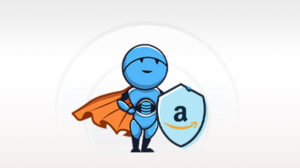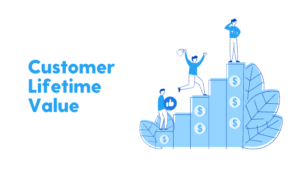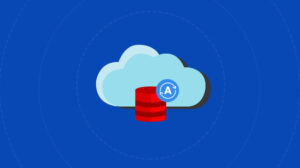A customer journey is the complete sum of experiences that a customer goes through when interacting with a company, from initial awareness of a product or service to the ultimate purchase and post-purchase evaluation. A customer journey can also include additional interactions with the company, such as customer support inquiries or the decision to renew a subscription.
The concept of the customer journey is useful for companies because it helps them understand the various touchpoints that a customer has with their brand and identify opportunities to improve the customer experience. By mapping out the customer journey, companies can better design and optimize their marketing and sales efforts and identify areas where they may need to improve their products or services.
Stages in Customer Journey
Here is a simple flow diagram representing the different stages of the customer journey:
- Awareness → Consideration → Purchase → Delivery → After-sales → Repeat
or - Awareness → Interest → Desire → Action → After-sales
or - Attract → Convert → Close → Delight
A general overview of the customer journey is given below, and it may vary depending on the industry or the company. Also, more stages can be added depending on the complexity of the purchase and the brand.
- Awareness: The customer becomes aware of a problem or need that a product or service can solve. This stage can include activities such as researching products online, reading reviews, or asking friends for recommendations.
Example: A customer realizes they need a new laptop and begins searching online for options. - Consideration: The customer evaluates different options and compares products or services. This stage can include activities such as visiting websites, reading product specifications, and comparing prices.
Example: The customer compares the features and prices of several laptops and decides to visit the website of a particular brand. - Purchase: The customer decides and completes a purchase. This stage can include completing an online form, making a phone call, or visiting a physical store.
Example: The customer decides to purchase a laptop from the brand’s website and completes the transaction by entering their payment information. - Delivery: The customer receives the product or service. This stage can include activities such as tracking the package, receiving the product, and setting it up.
Example: The customer tracks the package online and receives the laptop in the mail a few days later. - After-sales: The customer uses the product or service and may have questions or concerns. This stage can include activities such as using customer service, returning a product, or leaving a review.
Example: The customer has a question about how to set up the laptop and contacts the brand’s customer service for help. - Repeat: The customer may repeat the journey if they need similar product or service.
Example: The customer is satisfied with the laptop and the service they received, and plans to purchase from the same brand in the future.
How is customer journey linked to sales & marketing funnel
The sales and marketing funnel is a framework that represents the stages that a customer goes through on their way to making a purchase.
At the top of the funnel is the awareness stage, in which a customer becomes aware of a product or service. This is often the result of marketing efforts, such as advertising or content marketing. As the customer moves through the funnel, they enter the consideration stage, where they begin to evaluate their options and consider making a purchase.
The decision stage is the point at which the customer decides whether to make a purchase. At this point, the customer journey intersects with the sales process as the company attempts to close the sale and convert the customer into a paying customer. After the purchase, the customer enters the post-purchase evaluation stage, in which they assess the quality of the product or service and decide whether to continue doing business with the company.
Throughout the customer journey, companies use various marketing and sales tactics to try to move the customer through the funnel and ultimately convert them into paying customers. By understanding the customer journey and the factors that influence it, companies can design and optimize their marketing and sales efforts to be more effective.
Also, read:
Customer Journey Examples
Here are a few examples of customer journeys in different industries:
- eCommerce: A customer discovers a new online clothing store through a social media ad. They browse the website, add a few items to their cart, and complete the purchase using their preferred payment method. After receiving their order, the customer may leave a review or follow the brand on social media.
- Healthcare: A patient schedules an appointment with a new doctor. They fill out paperwork and have their first appointment, during which they discuss their medical history and concerns. The doctor may order tests or prescribe medication, and the patient returns for follow-up appointments as needed.
- Hospitality: A traveler searches for a hotel for an upcoming trip. They compare prices and amenities on different travel booking websites, and eventually make a reservation. Upon arrival, they check in and enjoy their stay at the hotel, possibly leaving a review or sharing photos on social media.
- Automotive: A car owner notices problems with their vehicle and begins researching potential solutions. They visit a dealership’s website, read reviews, and compare prices of different models. They schedule a test drive and eventually decide to buy a new car. They might also schedule regular service check-ups and maintenance after purchase.
- Banking: A customer is looking for a new bank account. They research different options online and visit a few branches to compare fees, interest rates, and other perks. Once they’ve made a decision, they open a new account, deposit money, and start using it for their daily transactions.
Customer Journey Communication Channels
Communication channels are the various ways in which a brand can reach and interact with customers at each stage of the journey. Here is a table with an example of an eCommerce brand’s customer journey communication channels, in order of the stages of the customer journey:
| Stage of Journey | Purpose | Channel |
| Awareness | Introduce the brand and products to potential customers | Social media, online advertising, email marketing |
| Consideration | Provide detailed information about products and encourage customers to compare and evaluate options | Website, product reviews, email marketing |
| Purchase | Facilitate the transaction and provide customers with information about delivery and returns | Website, email, live chat |
| Post-purchase | Build loyalty and encourage repeat purchases through customer service and engagement | Email, social media, customer service chat |
How to map the Customer Journey
To map the customer journey, you can follow these steps:
- Identify the different stages of the customer journey, such as awareness, consideration, and purchase.
- Identify the key touchpoints and interactions that customers have with your brand at each stage.
- Use customer feedback and data to understand the emotions, needs, and pain points that customers experience at each stage.
- Create personas to represent your typical customers and their journey.
- Use your understanding of the customer journey to inform your marketing and sales strategies.
- Continuously monitor and measure the customer journey to identify areas for improvement and optimize the customer experience.
Also, read: Customer Journey Map
User Journey vs Customer Journey
A user journey refers to a user’s steps to complete a specific task or goal on a website or app, such as making a purchase or signing up for a service. It typic interactions with digital touchpoints, such as a website or app, and forms, that lead the user to their desired outcome.
On the other hand, a customer journey refers to a customer’s overall experience with a brand or company, from awareness to post-purchase evaluation. It includes interactions with digital touchpoints, such as a website or app, and offline touchpoints, such as in-store visits or phone calls with customer service.
Both user and customer journeys are important for understanding how customers interact with your brand and identifying improvement opportunities.
Customer Journey Benefits
A customer journey map outlines the steps a customer goes through when interacting with a company, from initial awareness to post-purchase evaluation. The benefits of creating a customer journey map include:
- Improved customer understanding: By mapping out the steps a customer goes through, companies can gain a better understanding of their customers’ needs, pain points, and decision-making processes.
- Enhanced customer experience: By identifying areas of the customer journey that may be causing friction or confusion, companies can take steps to improve the customer experience.
- Increased sales and customer retention: Companies can increase sales and customer retention by addressing pain points and improving the customer experience.
- Better communication and collaboration across departments: A customer journey map can be used as a tool to align different departments around a common understanding of the customer.
- Identify new opportunities for growth or innovation: By understanding the customer journey in detail, companies can identify new opportunities for growth or innovation.
Also, read:
Customer Journey vs Customer Experience
The customer journey refers to the series of interactions and touchpoints that a customer has with a company, from initial awareness to post-purchase evaluation. This can include things like browsing a website, visiting a physical store, interacting with customer service, and using a product or service. The customer journey is often visualized as a map or timeline, with each step in the process representing a different stage in the customer’s relationship with the company.
Customer experience, on the other hand, refers to the overall perception and feelings a customer has about a company and its products or services. It encompasses the entire customer journey, but also includes factors such as emotions, expectations, and perceptions. A positive customer experience is one in which a customer feels satisfied and valued, while a negative customer experience is one in which a customer feels frustrated or disappointed. Companies often strive to improve customer experience by understanding and addressing pain points in the customer journey, and by creating positive, memorable interactions.
Customer Journey Analysis
Customer journey analysis is the process of studying and understanding the interactions and experiences of customers with a brand or product. This includes identifying key touchpoints and milestones throughout the customer’s journey and any pain points or areas for improvement.
Factors to consider in a customer journey analysis include:
- Demographic information (e.g. age, income, location)
- Behavioral data (e.g. website interactions, purchase history)
- Attitudinal data (e.g. customer feedback, surveys)
Related concepts to customer journey analysis include:
- Cohort analysis: the process of grouping customers based on shared characteristics or behaviors, such as the date of their first purchase
- Lifetime value (LTV): a prediction of the net profit attributed to the entire future relationship with a customer
- Customer segmentation: dividing customers into groups based on certain characteristics or behaviors in order to better understand and target them
- UI/UX (user interface/user experience): the design and functionality of a product or website and how it impacts the customer’s experience
Data foundation, which is essential for customer journey analysis, includes:
- Identifying and tracking customer interactions across all touchpoints (e.g. website, social media, email)
- Collecting and storing customer data in a centralized location
- Utilizing data visualization and analysis tools to make sense of the data
Read more:
Popular tools in the market for customer journey analysis include:
- Adobe Experience Cloud
- Google Analytics
- Mixpanel
- Heap
- Optimizely
- Pendo
- UserReplay
- ClickTale
- Mouseflow
Conclusion
In conclusion, understanding the customer journey is crucial for businesses to succeed. Plug-and-play tools may offer convenience, but they lack the customizability needed to gain a complete understanding of customer behavior. Utilizing GA4 and a data warehouse is the best way to view the customer journey comprehensively. For assistance in setting up this system, consider reaching out to Saras Analytics












